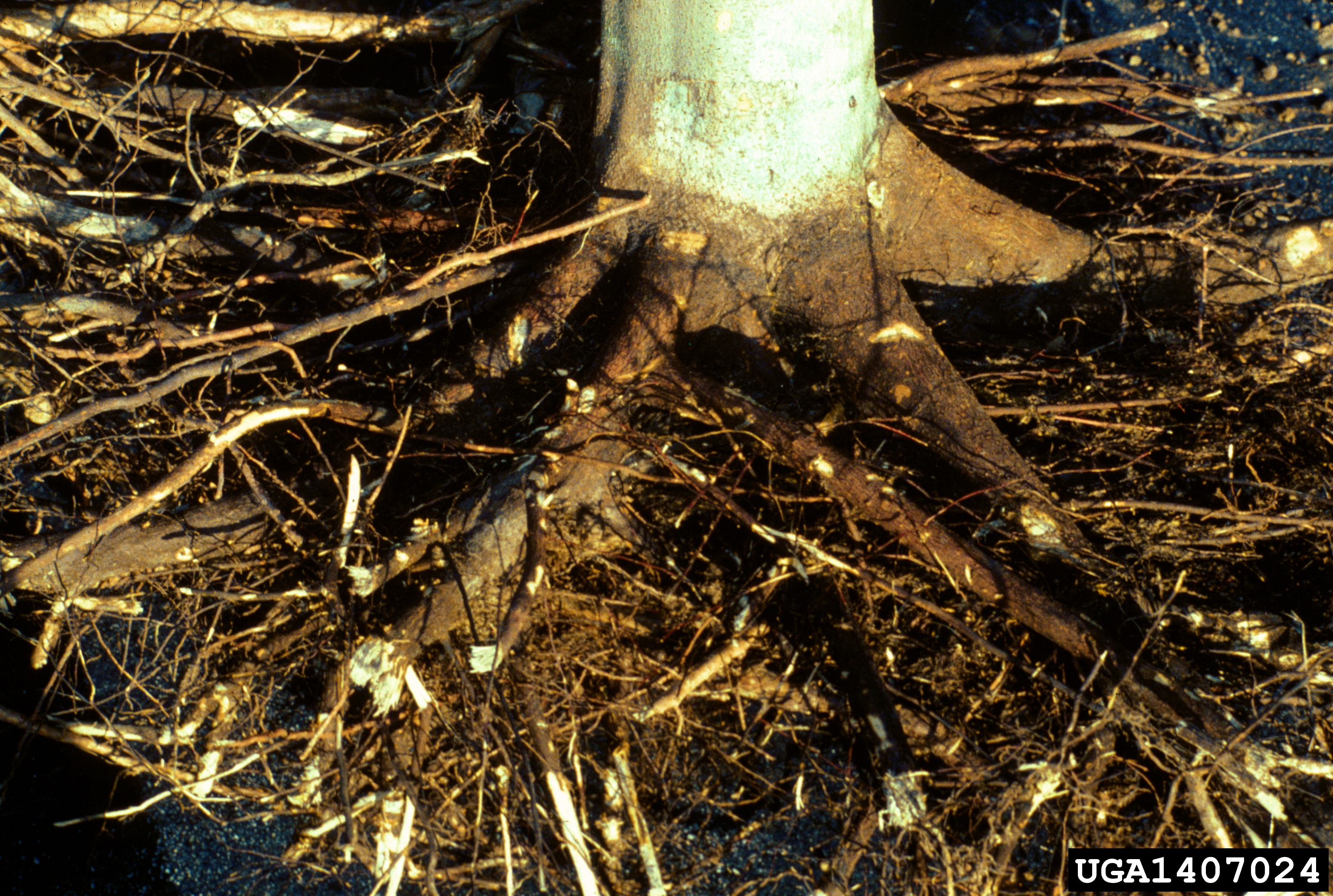 Understanding Plant Roots - February 26, 2020 Jeff Schalau, Agent, Agriculture & Natural Resources University of Arizona Cooperative Extension, Yavapai County The word “root” has meanings and uses in the English language. “Root” not only refers to an underground portion of a plant, but also has meanings in the disciplines of music, mathematics, anthropology, and even dentistry. In all cases, “root” refers to a basis or origin. In plants, roots anchor the plant, absorb and conduct water and essential nutrients from the soil to other plant parts, and store energy for later use by the plant Germinating seeds have a primary root that grows downward into the soil. On young roots, new cells are formed at the root tip. On the very end of the new root is a thimble-shaped cluster of cells called a “root cap”. The root cap is actually a sacrificial structure that helps the root penetrate through the soil. As the root grows downward, the root cap cells are sloughed off creating a slimy surface that lubricates the root as it goes deeper. Just behind the root cap is a growing point called “apical meristem”, which produces new root cells and a new root cap to replace the sloughed off cells. The root cells elongate pushing the root tip deeper into the soil. After the root tip has passed through a region of soil, the new root begins to mature producing root hairs. Root hairs are relatively short-lived and form after the root cells have elongated. Root hairs are very important to gardeners because they are the primary surfaces that absorb water and mineral nutrients from the soil. The newly forming roots with their root cap, root tip, zone of elongation, and root hairs make up what gardeners often call “feeder roots”. When transplanting, it is important to retain as many feeder roots as possible to ensure proper uptake of water and nutrients and allow quick recovery from this disturbance. Conversely, if a plant is torn from the soil, many feeder roots could be left behind decreasing the probability of survival. As plants mature, roots branch and expand their zone of soil contact forming a root system. In general, plants have one of two different types of root systems. Conifers and their relatives (gymnosperms) and broadleaved plants (dicotyledons) both have a taproot that grows downward usually branching along the way. Grasses and their relatives (monocotyledons) produce fibrous root systems that radiate out into the soil from the base of the plant. Taproots are often deeper, fleshier or woody, long-lived, and have more branching. Fibrous roots tend to be smaller, shorter-lived, and branch less. When thinking of a taproot, a carrot may come to mind. While a carrot is an example of a taproot, most large woody plants and trees do not have a large carrot-like structure below ground. Instead they have a highly branched, complex network of woody tissue that anchors the plant and conducts water and nutrients upward to the leaves. Feeder roots are found near the soil surface (3 to 5 inches deep). In irrigated landscape situations, mature tree root systems are often not deeper than 2 or 3 feet with the bulk of the root system being closer to the soil surface. Woody plant root systems often spread laterally 3 to 5 times the width of the crown. Grasses with their fibrous root systems are excellent at holding soil in place to reduce erosion. Perennial grasses that are planted in lawns and are common in native plant communities also contribute organic matter to the soil. Each year, old roots die and new roots are formed. The dead roots decay, are utilized by beneficial soil organisms (bacteria, fungi, protozoa, worms, and insects) releasing nutrients and producing organic matter. This turnover of roots is what contributes to the dark, rich soils found in grass-dominated landscapes. Try to visualize the root system that is present on each plant species you grow in your garden and landscape. Road cuts and excavations allow us to see plant root systems. Use this knowledge to consider how water and nutrients can be made available to plants in your landscapes, orchards, and gardens. If you installed drip irrigation to establish trees and shrubs, consider where the feeder roots will be 5 or 10 years down the road and expand irrigation accordingly. These are just a few ways that your garden will benefit from better understanding of root systems. You can follow the Backyard Gardener on Twitter – use the link on the BYG website. If you have other gardening questions, call or email the Master Gardener help line in the Prescott (928-445-6590/prescottmg@gmail.com) or Camp Verde (928-554-8992/verdevalleymg@gmail.com) and be sure to include your name, address and phone number. Find past Backyard Gardener columns or provide feedback at the Backyard Gardener web site: http://cals.arizona.edu/yavapai/anr/hort/byg/.  Excavated tree root system shows both woody support roots as well as fine feeder roots (USDA Forest Service - Northeastern Area, USDA Forest Service, Bugwood.org).
Excavated tree root system shows both woody support roots as well as fine feeder roots (USDA Forest Service - Northeastern Area, USDA Forest Service, Bugwood.org).Additional Resources Healthy Roots and Healthy Trees, Colorado State University Extension extension.colostate.edu/topic-areas/yard-garden/healthy-roots-and-healthy-trees-2-926/ Tree Root Systems, Iowa State University Extension and Outreach hortnews.extension.iastate.edu/1992/4-1-1992/treeroot.html Sustainable Landscape Design Using Herbaceous Plants, South Dakota State University Extension extension.sdstate.edu/sustainable-landscape-design-using-herbaceous-plants |